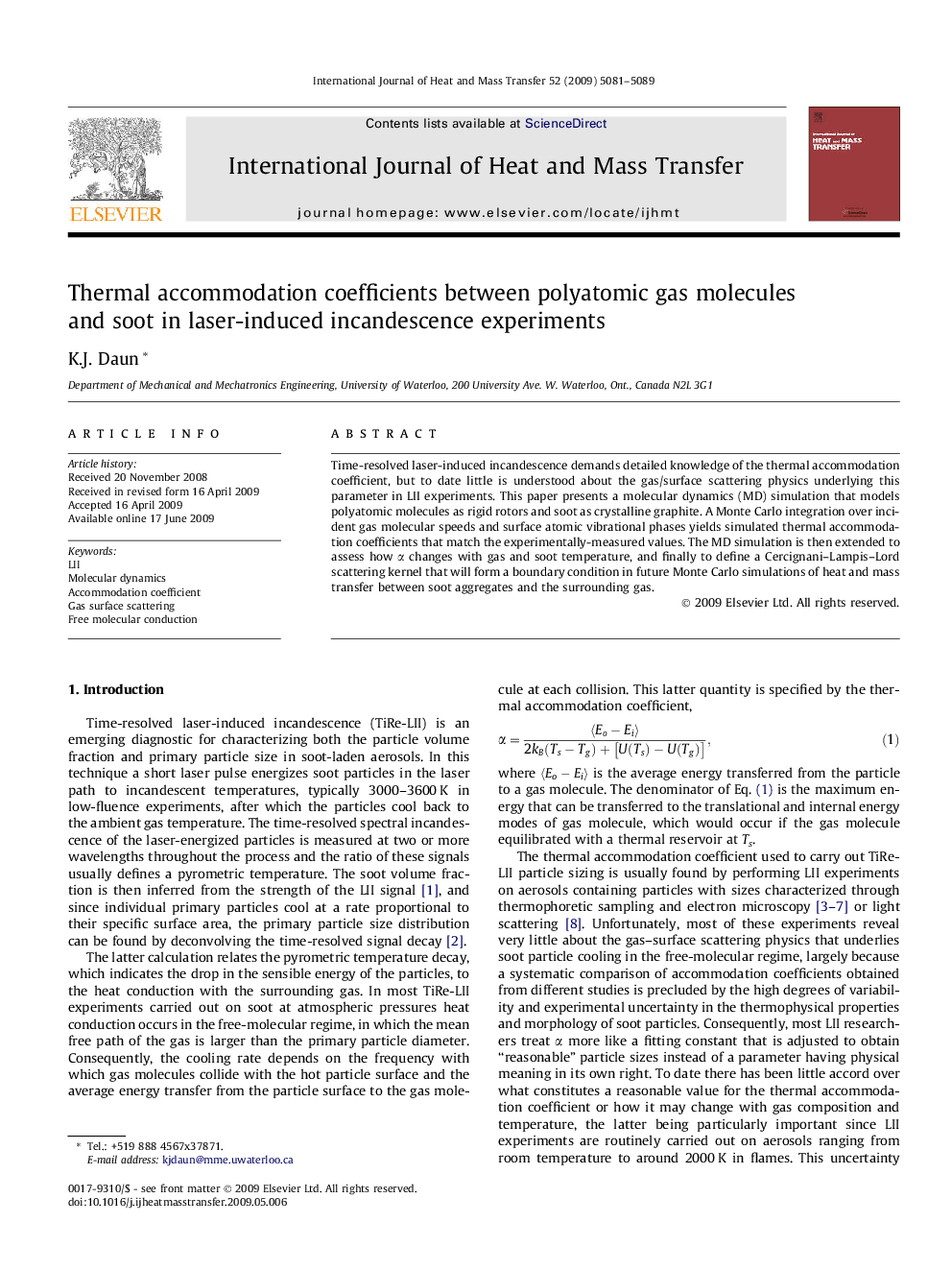| Article ID | Journal | Published Year | Pages | File Type |
|---|---|---|---|---|
| 661429 | International Journal of Heat and Mass Transfer | 2009 | 9 Pages |
Time-resolved laser-induced incandescence demands detailed knowledge of the thermal accommodation coefficient, but to date little is understood about the gas/surface scattering physics underlying this parameter in LII experiments. This paper presents a molecular dynamics (MD) simulation that models polyatomic molecules as rigid rotors and soot as crystalline graphite. A Monte Carlo integration over incident gas molecular speeds and surface atomic vibrational phases yields simulated thermal accommodation coefficients that match the experimentally-measured values. The MD simulation is then extended to assess how α changes with gas and soot temperature, and finally to define a Cercignani–Lampis–Lord scattering kernel that will form a boundary condition in future Monte Carlo simulations of heat and mass transfer between soot aggregates and the surrounding gas.
